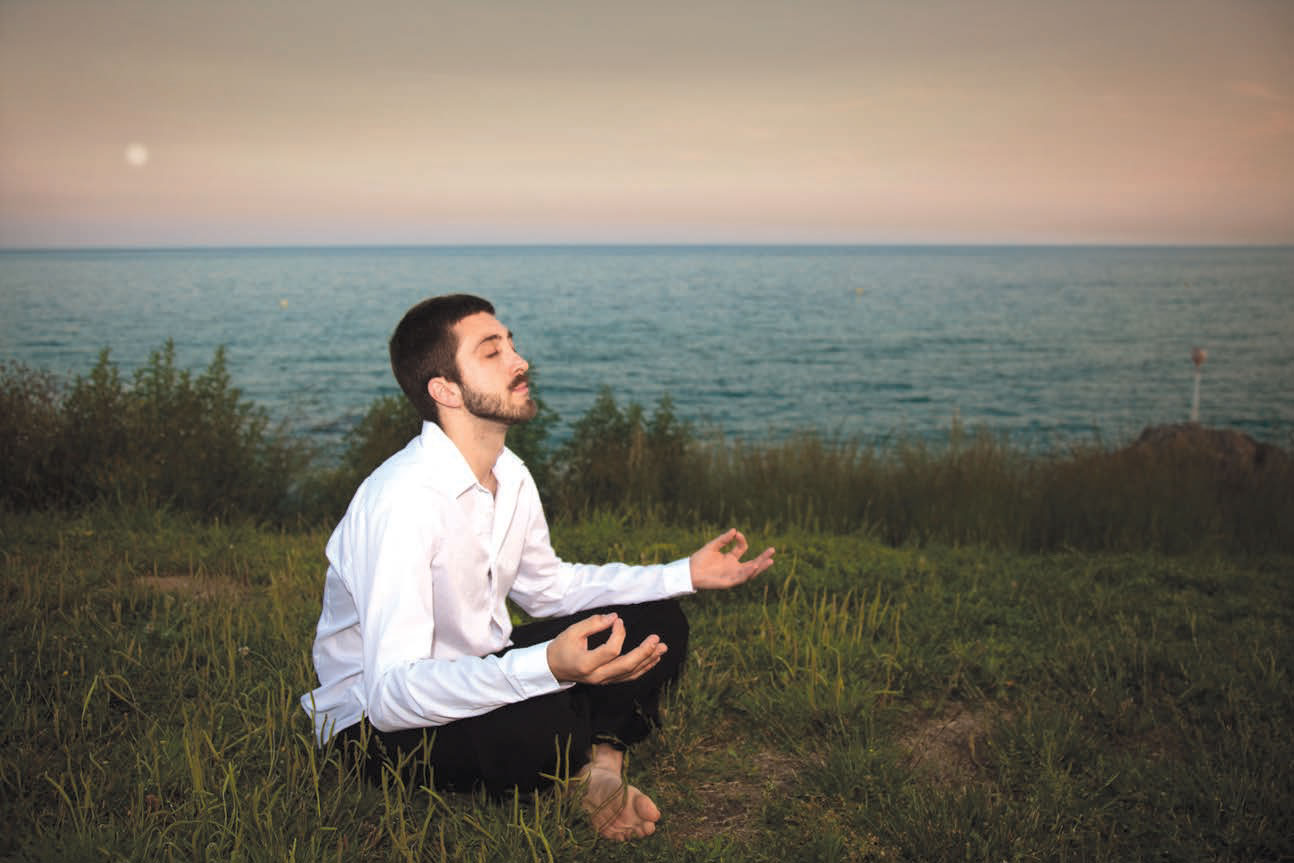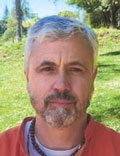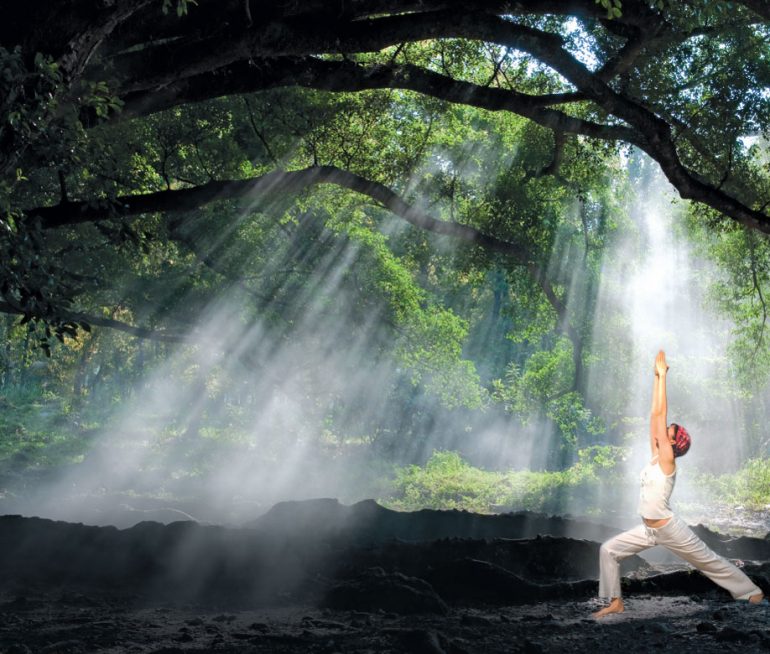Everything that refers to traditional things leads us to the following reflection: “Life is an eternal property where all its subjects, who pass through it, must endeavor to recognize its laws and principles for them to be able to fully enjoy its blessings.”
Life and its eternal noble case, our physical body, the knowledge, intelligence, thoughts, emotions, true feelings, and actions all make part of a tradition taught from generation to generation since the beginning. That’s the way it always will be, with only one purpose: the will is an attribution of the good ones. Goodness is an inherent virtue of the human soul and this is the proper way for one to find his/her absolute essence. Each thing in this universe has a meaning which is beyond our logical comprehension, and that’s why it is necessary that each one of us try, in all actions and directions, to be gentler with our divine nature. Life is divine, in other words, eternal. Our existence, which has an expiration term varies according to our most intimate desires, when in reality the greatest will is being able to experience and express how much we have always been connected to life. The absence of any manifested or materialized thing in this existence doesn’t keep us from feeling its magnificent presence in our hearts.
The great and sublime life’s desire has already been constituted in the manifestation of a complete and intact body in its functions, combinations, systems, organs, anatomy, physiology, cells, energy, etc.
Adi Shankaracharya, one of the most influential masters of the Yogi philosophy and Hinduism who revitalized the science of Vedas, in order to manifest the truth about what is right or wrong, real or unreal, and the non-dualism called Advaita, substantiated his comments about the sacred texts, teaching the existence of a fundamental field of a subjacent and non-local reality. This intelligence can manifest all the sensorial phenomenon of what we understand as physical universe. At any moment this universe is discovered and then we realize that it cannot bring peace and genuine happiness. Thanks to the whole manifested universe, throughout the ages, we have been finding the necessity of observing and exploring our journey of unveiling the layers which hide our original essential nature.
To understand these principles, Shankaracharya explained the nature of existence through the transitory coverage, layers called “koshas.” He mentioned three great layers: physical body – Stula Sharira (molecular field) – compounded of a layer made of environment, physical material (cells) of food and energy or prana; the subtle body – Sukshma Sharira (repository field of sensorial impressions, the mind) – coverage compounded by sensations captured by the senses, especially images and sounds which register the experiences that are obtained and contained in the consciousness, called “Manomaya kosha.” This is the aspect of the mind that distinguishes, discerns, and uses knowledge and feeling to promote solutions and answers contained in the being’s choices. The great purpose of this mind, according to yoga, is distinguishing between the real and unreal. Being aware of this difference is the essence of yoga.

Another aspect is the ego or “ahamkara.” According to Shankara, the ego is the aspect of the self that gets identified with the positions and postures in relation to what we own in life. As a last analysis it stands for our self-image. In other words, that’s the way we want to project who we are – to ourselves and the world. Most of the emotional pain and suffering is caused by the offense felt by the ego because the truth is considered to be under its control and jurisdiction – the causal body, Karana Sharira (field of pure potentiality or spiritual sphere). According to yoga, subjacent to the molecular field which we call physical body and the thoughts field called subtle body, there is a life field known as causal body or spiritual sphere. Although this sphere cannot be measured, that’s what gives origin to everything that is manifested – thoughts, feelings, dreams, desires, memories, as well as the molecules that form our material world. The personal sphere of the spirit is the layer that sows the seeds of memories and desires. According to Shankaracharya, each person arrives at this universe with a specific purpose and an exclusive set of talents. With the proper environment, the seeds sprout and we become able to express our qualities in the world.
Although the modern pattern of material life proclaims that genes determine people’s talents, by observing identical twins it’s possible to comprehend that the same molecular structure doesn’t determine the nature of a person. Shankara also defines that each individual has a personal soul with exclusive memories and desires. These memories and desires direct the course of life. When the seeds are fed with correct attention and intention, the innate talents sprout and the personal soul reaches achievement. The second layer of the causal body is the collective sphere. It motivates us to live a life of mystical proportions. The gods and goddesses who reside in the collective sphere inside our soul have only one desire: to express their creative power through you.
We are a living history. Yoga helps us to expand the feeling of the personal self to expand the collective sphere of our soul. In the depth of humanity’s aspirations, we achieve our own aspiration through perennial histories that we will tell ourselves and our children. According to Shankara, the deepest aspect of our being is beyond time, space and causality and so originates the manifested universe. This is called the universal sphere of the spirit where all the distinctions merge into unity. This field of pure potentiality manifests an infinitely diversified world of shapes and phenomena. The unlimited ocean of existence gets disguised in the layers of the causal, subtle and physical fields. This non-local and unlimited sphere is the source and the objective of life.
The perspective of knowledge about life and existence taught by Shankara remains alive even today, exactly like centuries ago. To the ones who seek a greater well-being, Shankara offers vitality and wisdom, a map (directions) and a territory (way) which, under reflection, conducts all beings to the direct experience with the soul. The journey of the deepest self-knowledge doesn’t consist of seeking new landscapes or environment, but of seeing with new eyes the same thing. If everything in this world is profane and we don’t see the possibility of sacred, then it won’t be in heaven, where everything apparently is sacred, that we will stop being profane.
Every inspiration is a memory of the constant dialogue between the body and the environment. Every inspiration connects us to the voice of the most intimate intuition inside of us and reveals, through our knowledge, the eternal feeling of the great eye of the non-manifested universe called “heart.”
Tradition, therefore, shows us a way towards a kind of knowledge which transcends superficiality and dives into the depths of ourselves where everything can be transformed and achieved.

Components of tradition

- The constant presence of a guru can help us identify our limitations and overcome them. The guru represents loyalty to the way that was transformed in pure, powerful, and wise feeling, able to destroy the illusion that insists on tormenting a person who is unprepared for his/her basic condition. A guru is not the only image of a person. It can also be revealed in your own attentive heart. The care with your physical body, recognizing its necessities according to its structure and constitution, such as: cleaning, regular hygiene, exercises, proper postures are disciplines of this sphere.
- Certain mantras (sounds) can promote not only a calm mind, but also install an environment of peace, tranquility and harmony.
- The use of Pranayama (conscious control of breathing) can also promote a cleansing and energy flow improvement in the body, as well as keeping a propitious connection between the physical body and the environment.
- The positive behavior with oneself, the collective and the universe where we are, also conducts the yogi to the experience of being one with the soul.
- The control over thoughts and emotions promote an intelligent consciousness and long-lasting feelings of happiness.
- Rites and rituals install an environment of peace, tranquility and renewal to the ones who want to consolidate their journey in spirituality.
- Meditation is the deepest state of concentration practice in its true objectives and intentions, which aim at achieving freedom.
- Finally, being good to ourselves and to others is the greatest good that can make us prosperous, happy, and auspicious.
Modernity is nothing more than the life being lived now. The greatest technology still is the human being and its huge capacity for transformation. The great challenge nowadays is finding ways to fully live our life without causing damage to the environment and to others.
We are all convinced that we seek the same things and that we need each other, therefore, it becomes necessary to know how to live in harmony – where respect, humility, and perseverance always prevail.
Tradition is like an old walking stick, which besides supporting the old man on his journey is also a tool of power, strength, and faith. In other words, tradition is the fundamental companion for those who intend to get old wisely.
 Swamiji Shankara Saraswati Maharaj is recognized by different traditional Yoga ancestries, such as Saraswati, Giri, Das, Siddha Kashmir, South Siddha Tantric Yoga, North Siddha Tantric Yoga, and others. Throughout his 30 years of experience, he has taught thousands of students. He is considered by great swamis and gurus as great manifestation of Lord Shiva Shankara. He is the spiritual head of the World Shankara Dharma Samsad.
Swamiji Shankara Saraswati Maharaj is recognized by different traditional Yoga ancestries, such as Saraswati, Giri, Das, Siddha Kashmir, South Siddha Tantric Yoga, North Siddha Tantric Yoga, and others. Throughout his 30 years of experience, he has taught thousands of students. He is considered by great swamis and gurus as great manifestation of Lord Shiva Shankara. He is the spiritual head of the World Shankara Dharma Samsad.







